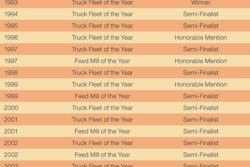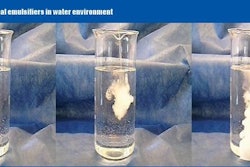Far from the vast potential so evident in other developing markets, Russia's feed industry consists of only about 335 feed mills. And at any given time, most of these mills run at a mere 20 percent of production capacity. But despite its comparatively modest size, the Russian feed market is the largest in Central and Eastern Europe, a region registering sharp growth in animal nutrition and attracting multinational investment.
Feed International reported in January 2008 that Russia's total industrial feed production for 2007 was expected to be as high as 18.3 million metric tons, putting it at eighth in the world for feed production when the European Union is considered a single entity. However, the Russian feed market is notoriously difficult to estimate.
In Russia, the feed industry consists of three categories of producers:
- Independent feed mills built in Soviet times. These provide tailored diets based on customer specifications. Their profitabilty depends on the efficiency of their sales force;
- Soviet-era mills purchased by integrators, which produce high-quality feed for animals belonging to the owners; and
- Feed producer-owned miils.
The Russian compound feed sector is growing in response to booming domestic poultry production. Compound feed growth in turn is expected to provoke stronger demand for concentrates and premixes, which play an important role in the marketplace. Foreign suppliers have wasted no time in setting up import and production operations in the country.
One investment bank forecasts meat consumption in Russia at 89 kg meat/eggs per capita by 2020, compared to 83kg per capita in 1992. Since 2003, domestic meat production has received indirect support from the state, in the shape of import quotas for beef, pork and poultry. The immediate result of the quotas has been a rise in the price of domestic meat prices, as restrictions have been effective against cheap foreign imports. Quotas can change unexpectedly, however.
Imported feed remains complicated
Tigran Papazyan, country manager at Alltech, Russia, strikes a note of warning. "Importing feed into the country isn't easy," he says. "Registration is complicated, veterinary legislation is controversial. A barrier to entry into the Russian market that cannot be overlooked is the reluctance of livestock and poultry producers to invest in feed," Mr Papazyan continues. Simply put, he says, they have yet to make a connection between feed quality and animal productivity. "To compound this, imported value-added feeds are more expensive."
But overall, Mr. Papazyan agrees that there is opportunity for foreign players. "Heavy investment in animal production, spurred by national and regional development projects, can only be good news for feed manufacturers."
He agrees that demand for meat in general and higher quality produce in particular is rising. This only adds to an existing tendency in Russia to import herds, which demand quality feed to extract maximum yield and quality. "Additionally, Russian consumers have an increasingly sophisticated approach to diet," notes Mr. Papazyan. "They are aware of the importance of functional foods. As an example, over 40 percent of Russian eggs are enriched with organic selenium."


.jpg?auto=format%2Ccompress&fit=crop&h=167&q=70&w=250)














